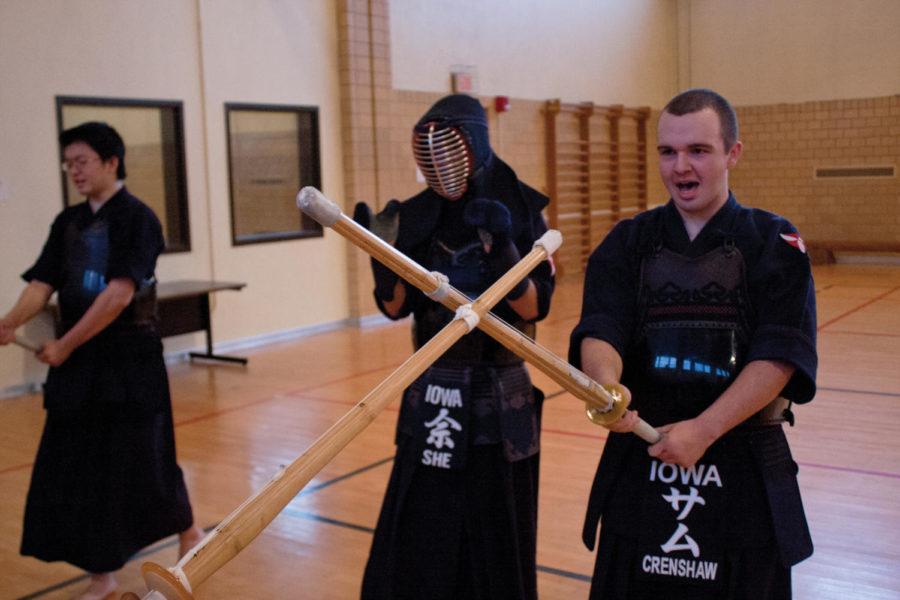Kumdo club aims to gain recognition, grow club
Andrew Clawson/Iowa State Daily
Sam Crenshaw, right, sophmore in history, practices with a new member during the first Kumdo Club meeting Wednesday, Sept. 5 at Forker Building.
September 7, 2012
ISU Kumdo Club members aren’t Jedi knights or live-action role players, but they have been confused as being both of those things.
“We’re not really frustrated with the fact that people do not know,” said sophomore Rudy She, president of the Kumdo Club. “We just want to show who we are and what we do.”
She said Kumdo, which means “art of the sword” in Korean, is a rare weapon-based form of martial arts.
“When people hear Kumdo, they don’t know what it is,” She said. “And then when you say Kendo, which is the Japanese word for Kumdo, some people know what it is.”
Kendo, which is a martial art form from Japan, is believed to have come to Korea before World War II, when Japan ruled the country. Kendo then transformed into Kumdo in South Korea.
“If you explain [Kumdo] to someone who has no idea what it is, you would explain it as Korean fencing,” said sophomore Sam Crenshaw, club treasurer. “But it’s really just an ancient martial art that has been passed down for a long time.”
In competition, fighters wear dark-colored protective armor and fight with bamboo swords called “shinai.”
“To win a match, you have to gain two points before your opponent does,” Crenshaw said.
Striking the opponent on the head, the wrist or in the chest scores points. But fighters must do more than simply strike their opponent; they must also use what is called “ki ken tai.”
“[Ki ken tai is] utilizing your sword, your body and your spirit all at once,” Crenshaw said. “So you have to strike, shout and move all at the exact right moment, otherwise you don’t get a point.”
Young Kyoo Joo, a South Korean native and master in Kumdo, founded the ISU Kumdo club in 1996. Daniel Joo, Kyoo’s son and senior at Iowa State, said his father “wanted to spread his teaching.”
The Kumdo club had an estimated 150 members in 1996; currently, the club has only 10 members. In an effort to recruit more people, She said the club has “Americanized” certain aspects of Kumdo to make it more appealing.
“We try to keep it traditional, but if we keep it too traditional, no one would join,” She said. “We try to put some traditional Korean or Japanese sayings into American sayings and make it more interesting and exciting for the American point of view.”
Another way the club Americanizes the sport is by allowing members to spar before they would traditionally be allowed to. The sparring, She said, also helps people to see the importance of learning the basics of the sport.
For this season, which runs through the fall and spring semesters, the club has three priorities: The first “is to make ourselves known, to get more members,” She said. The second is to “win medals for our university and not ourselves,” and the third is fundraising.
“Our masters stress to us the fact that we must not let this martial art die,” She said. “If we stop recruiting, we would graduate and no one would be left in the club.”
The Kumdo club practices in 202W Forker Building every Monday and Wednesday from 6 to 8 p.m. This season, they expect to compete in Moline, Ill., and also host a competition on campus.

















